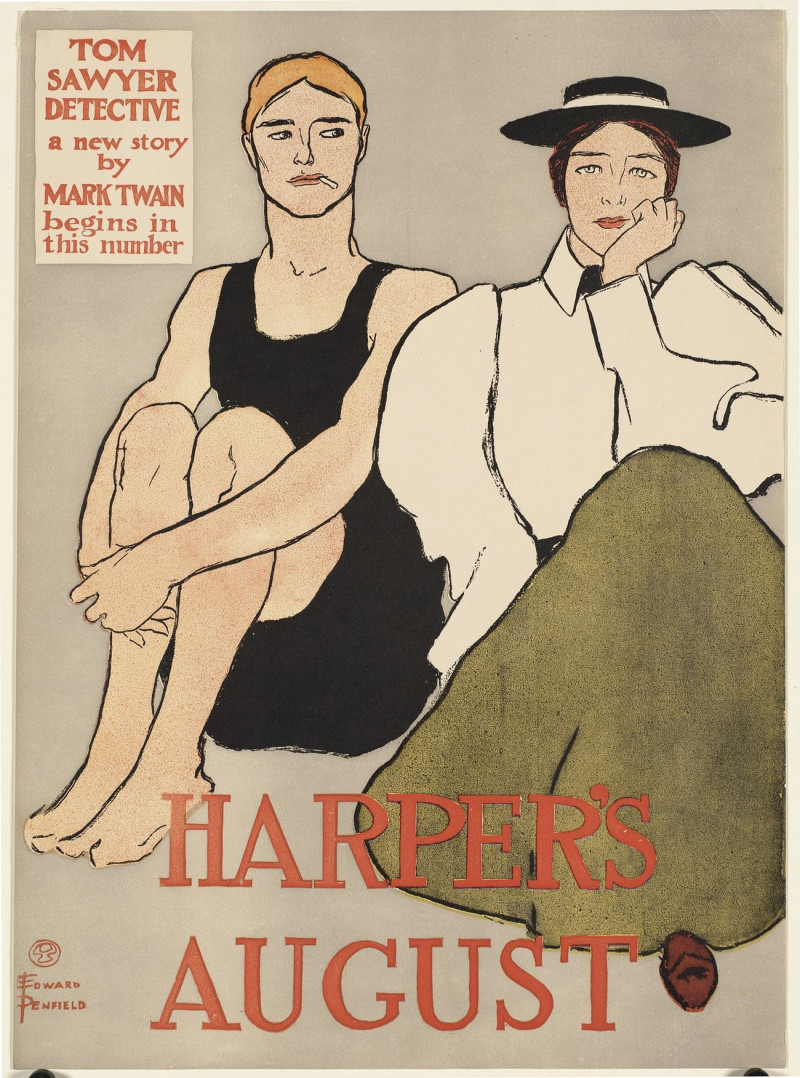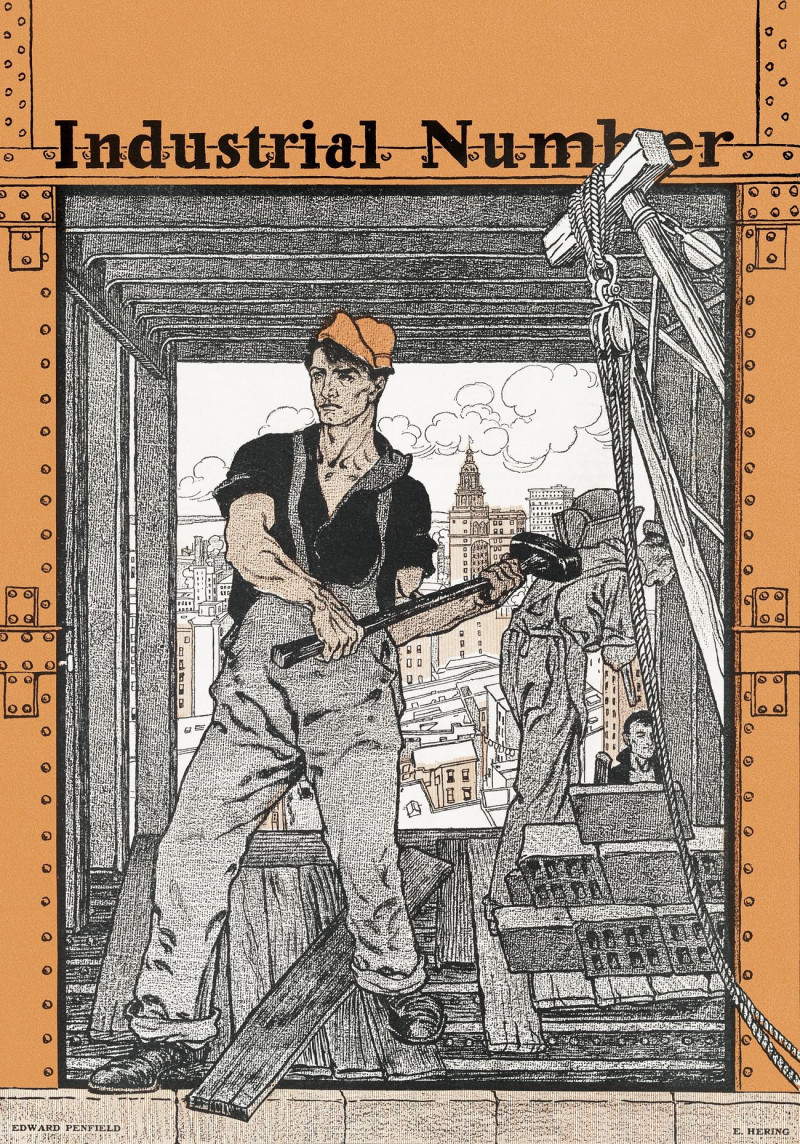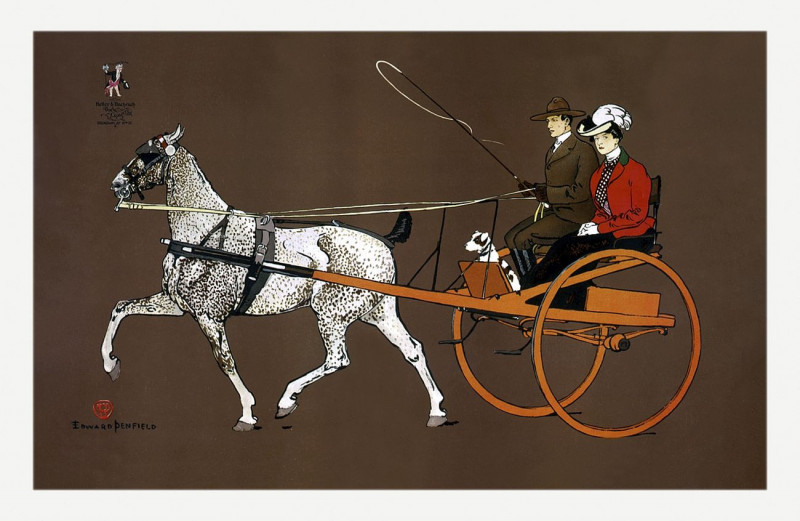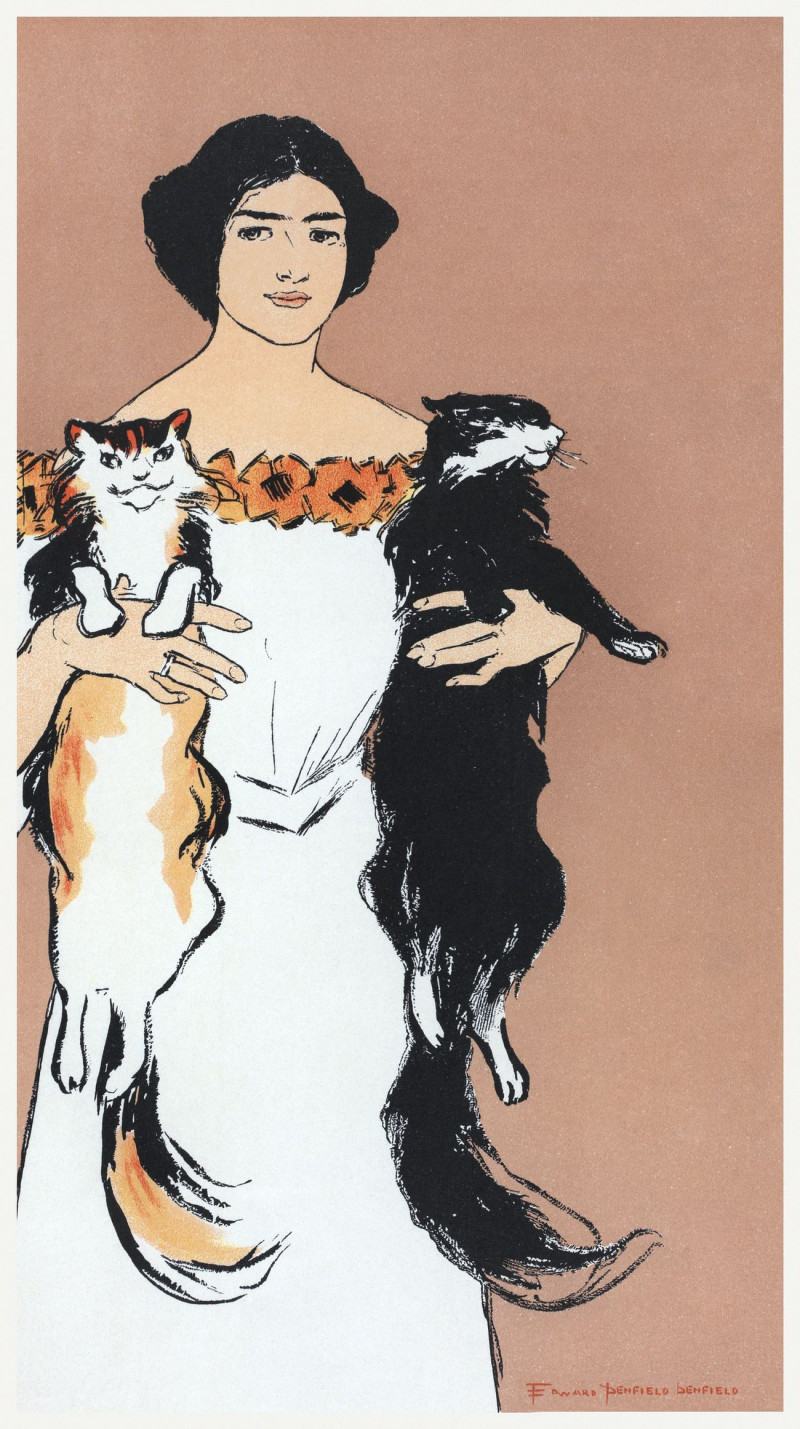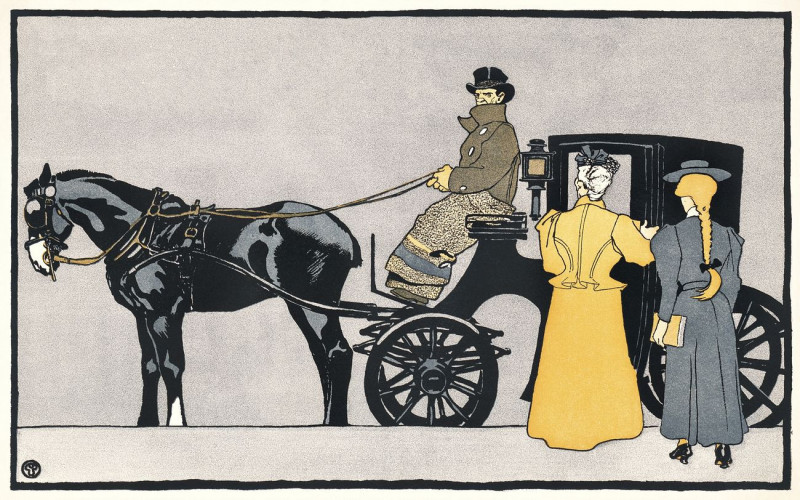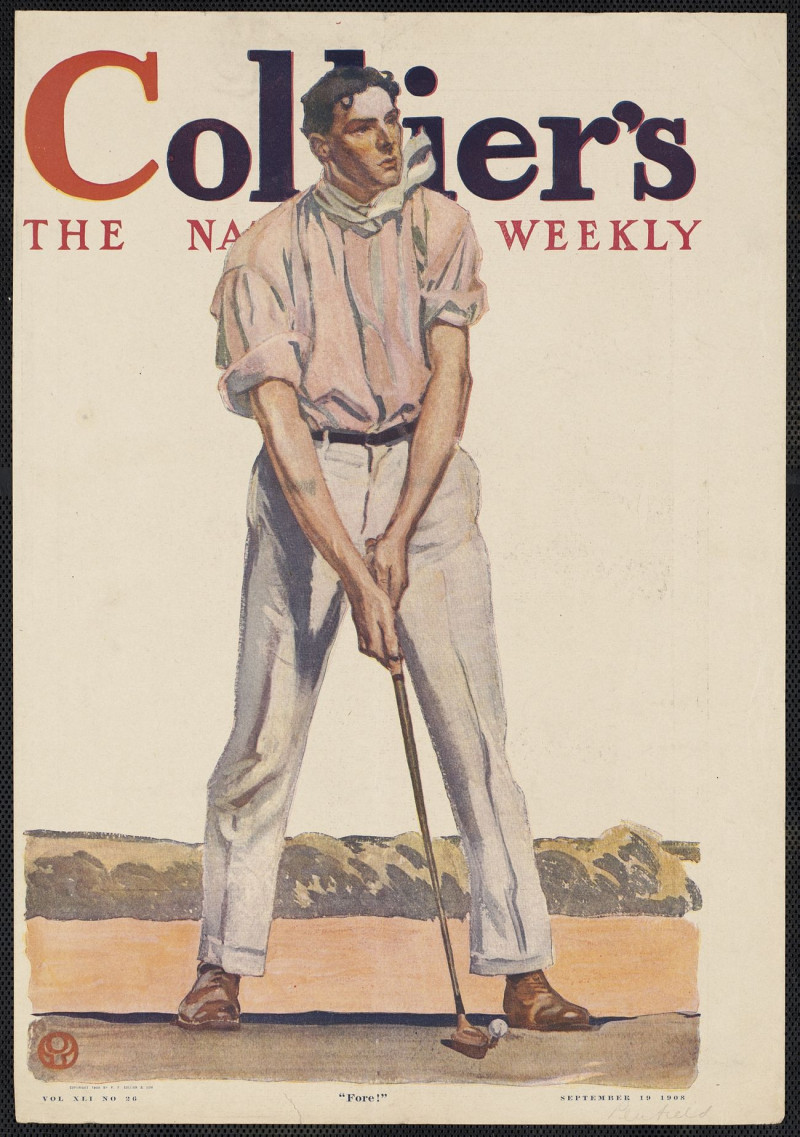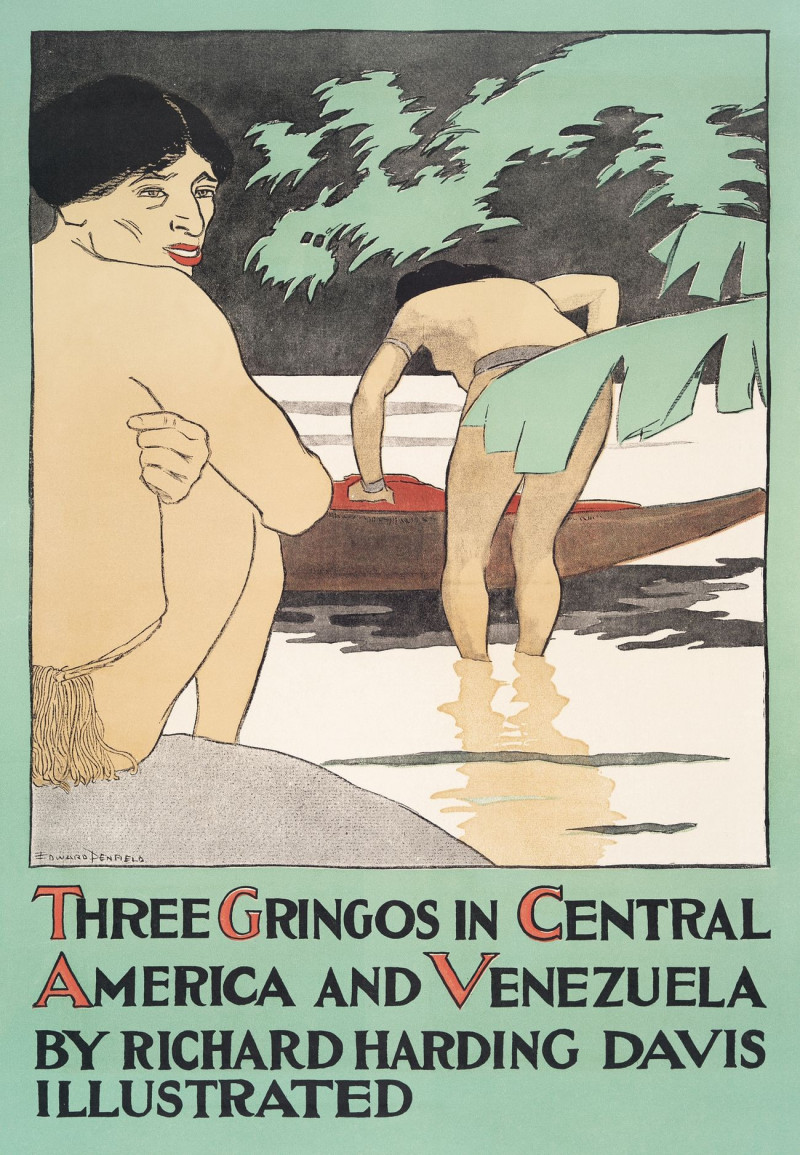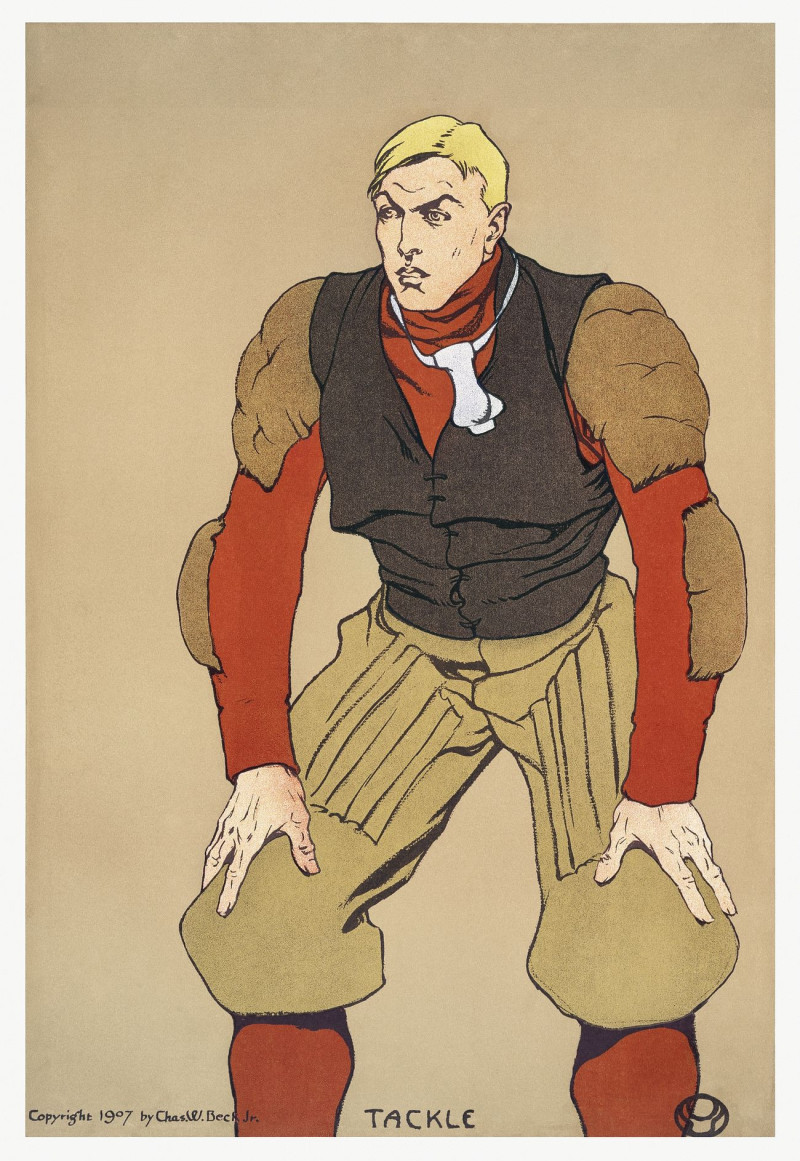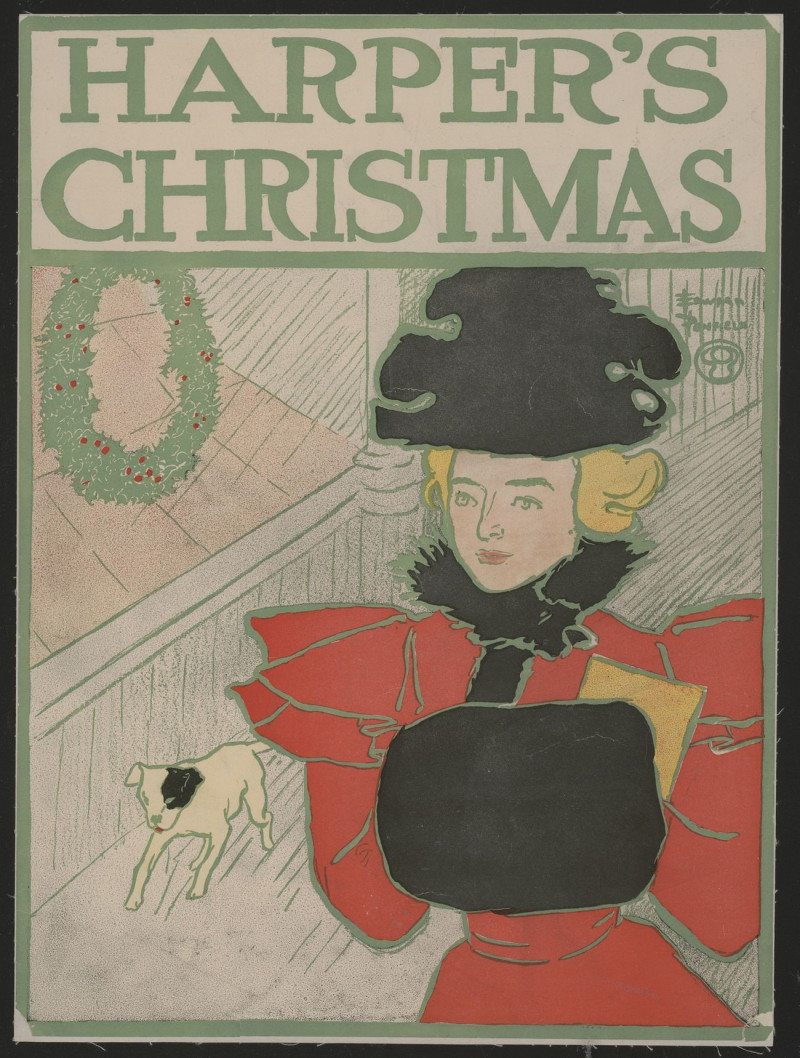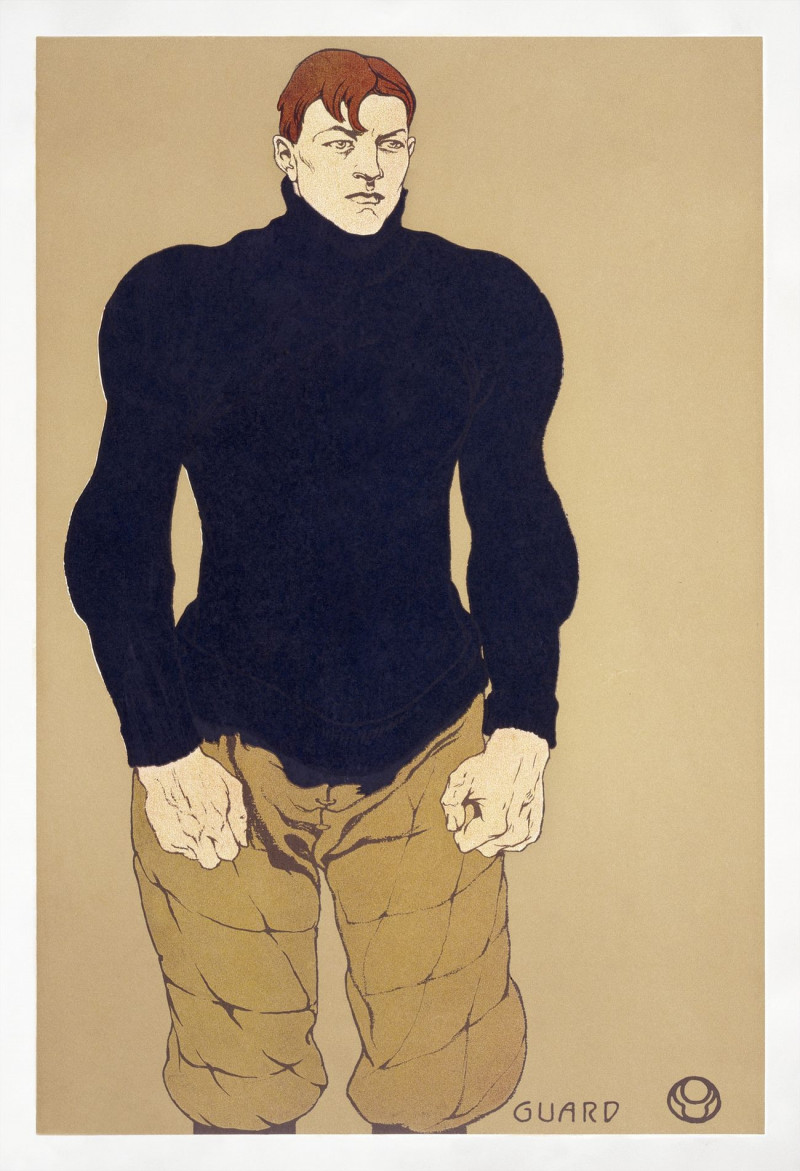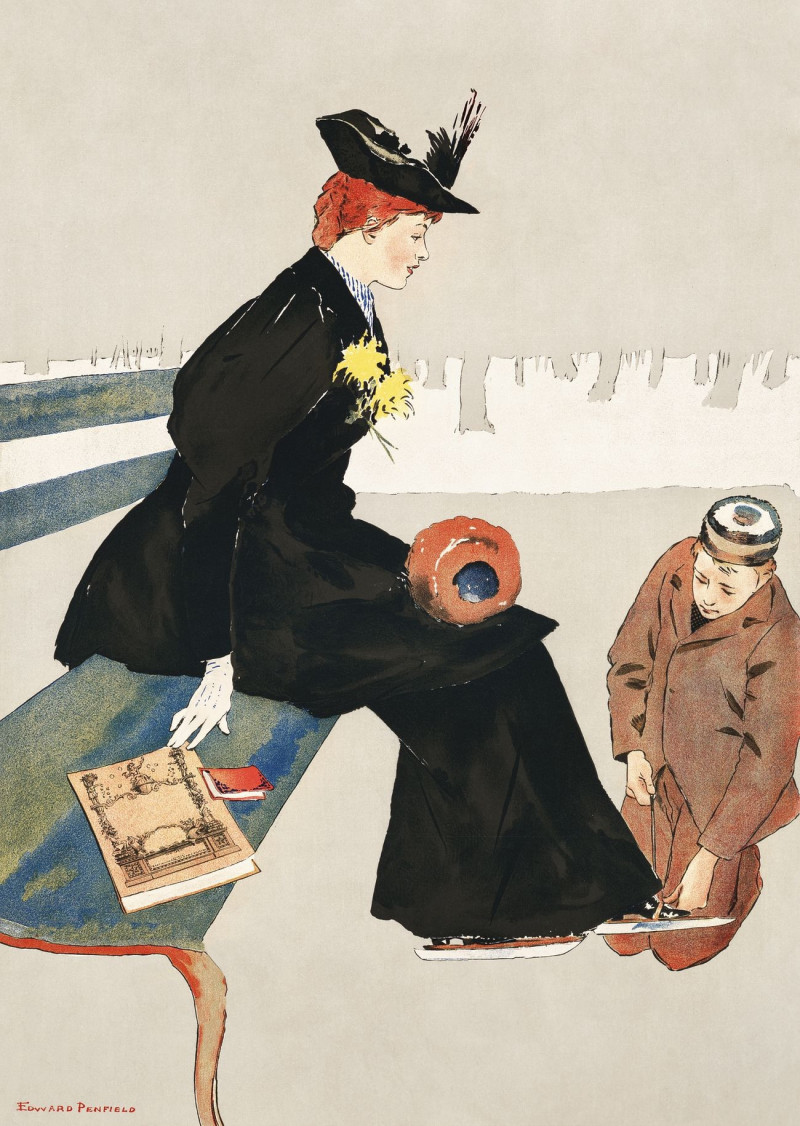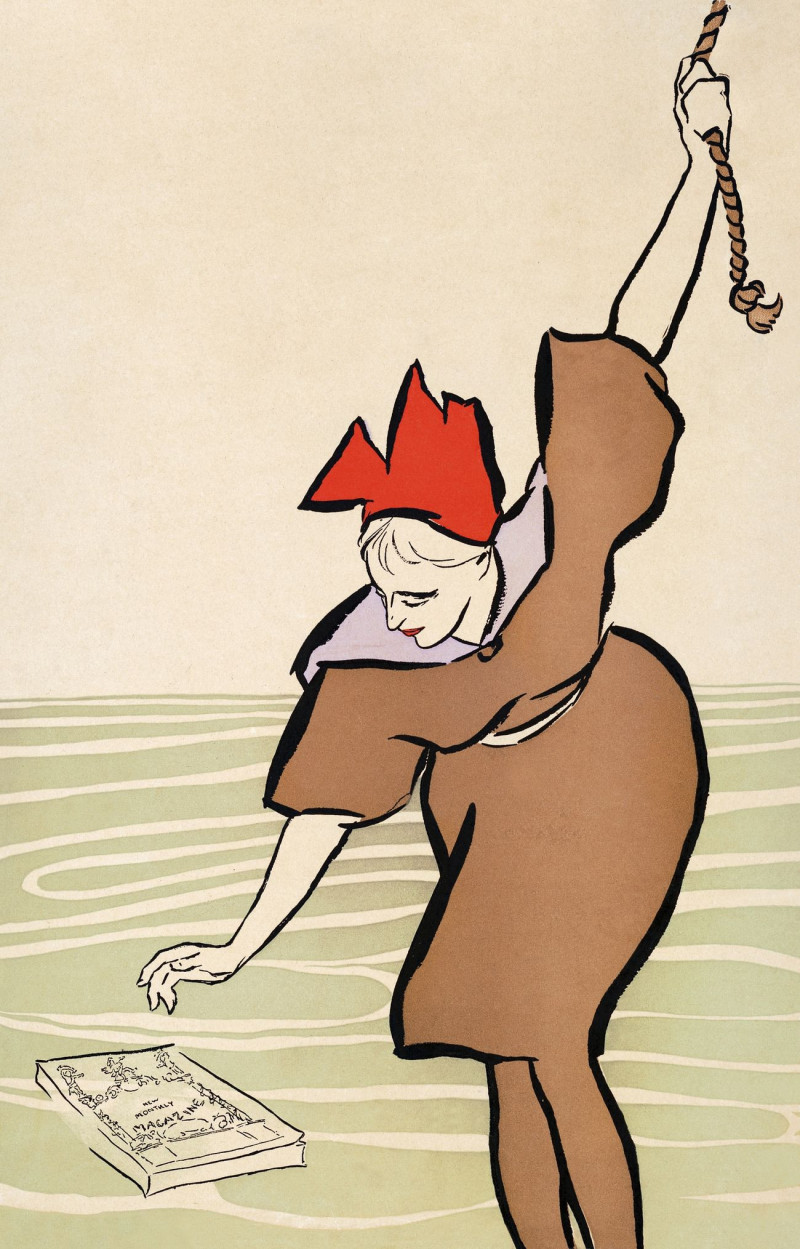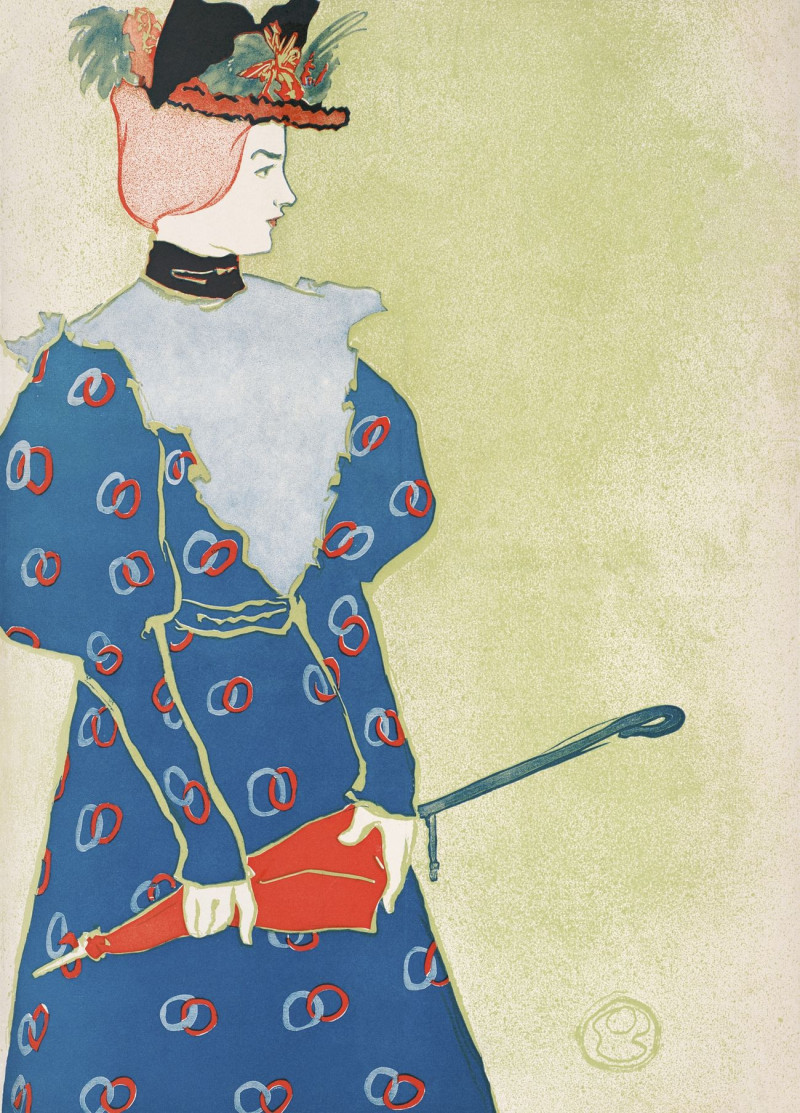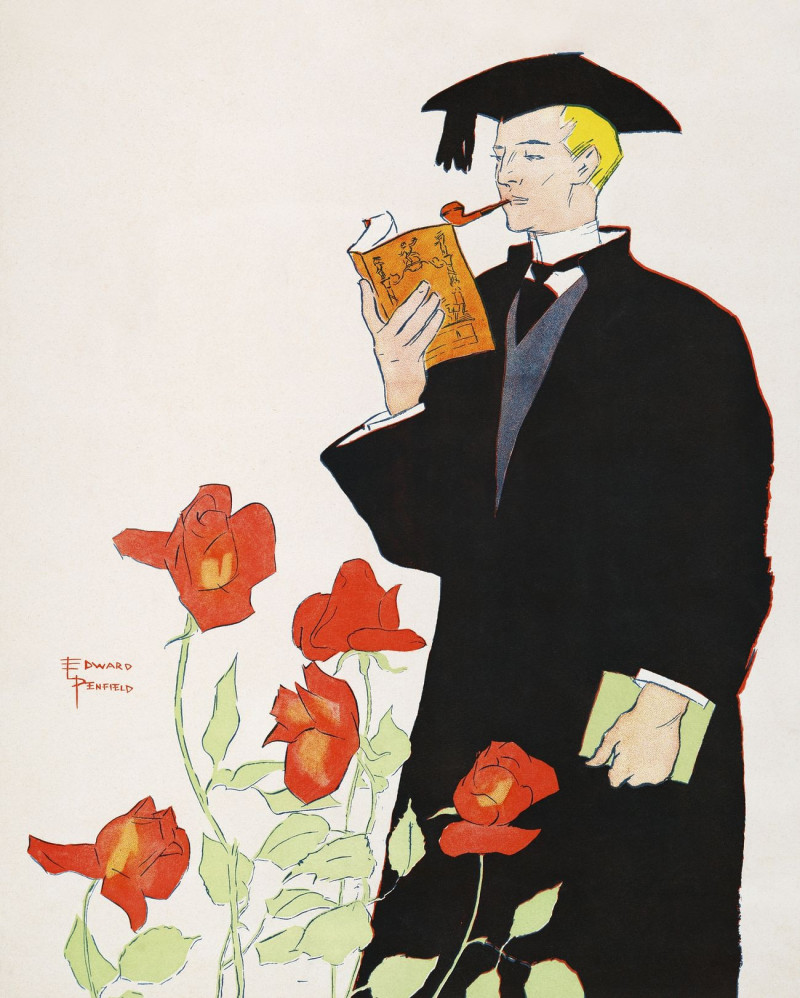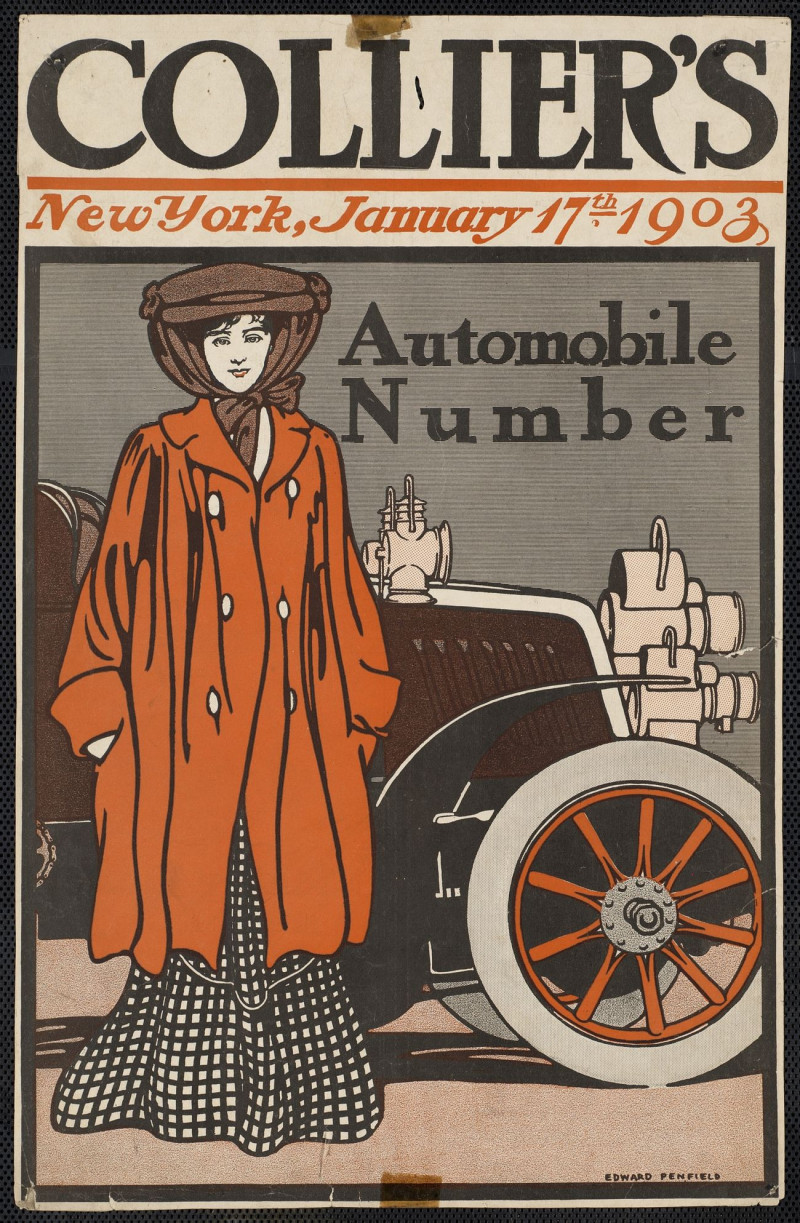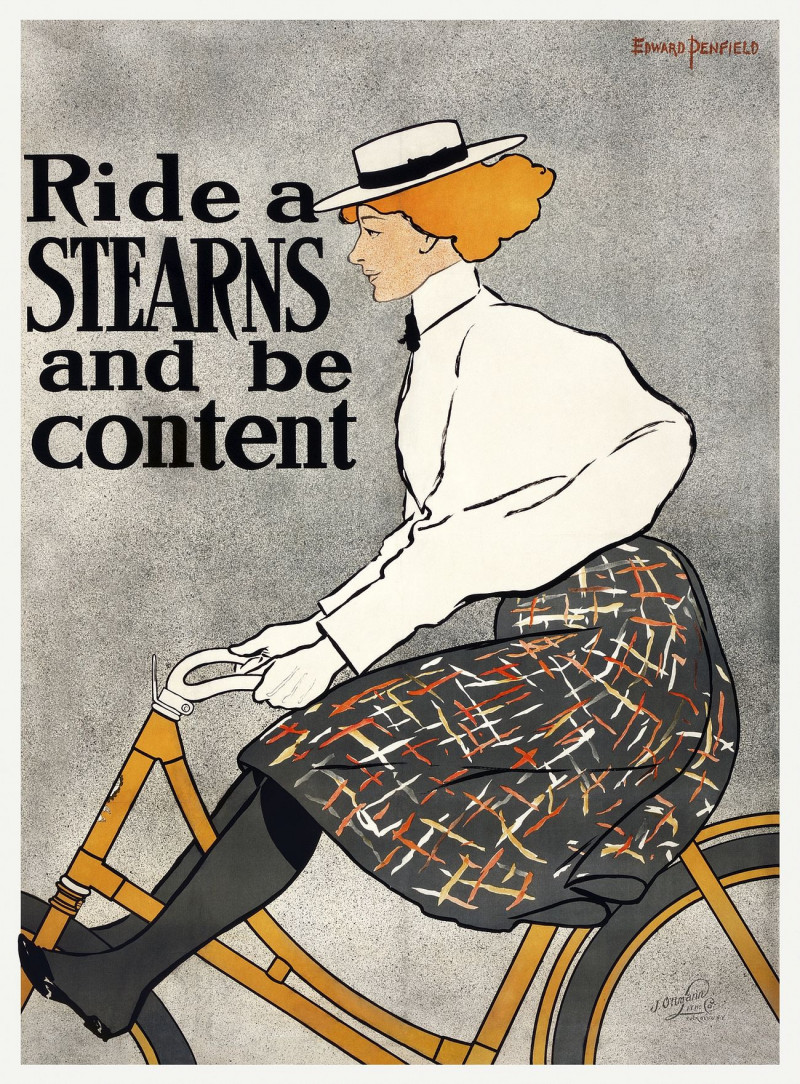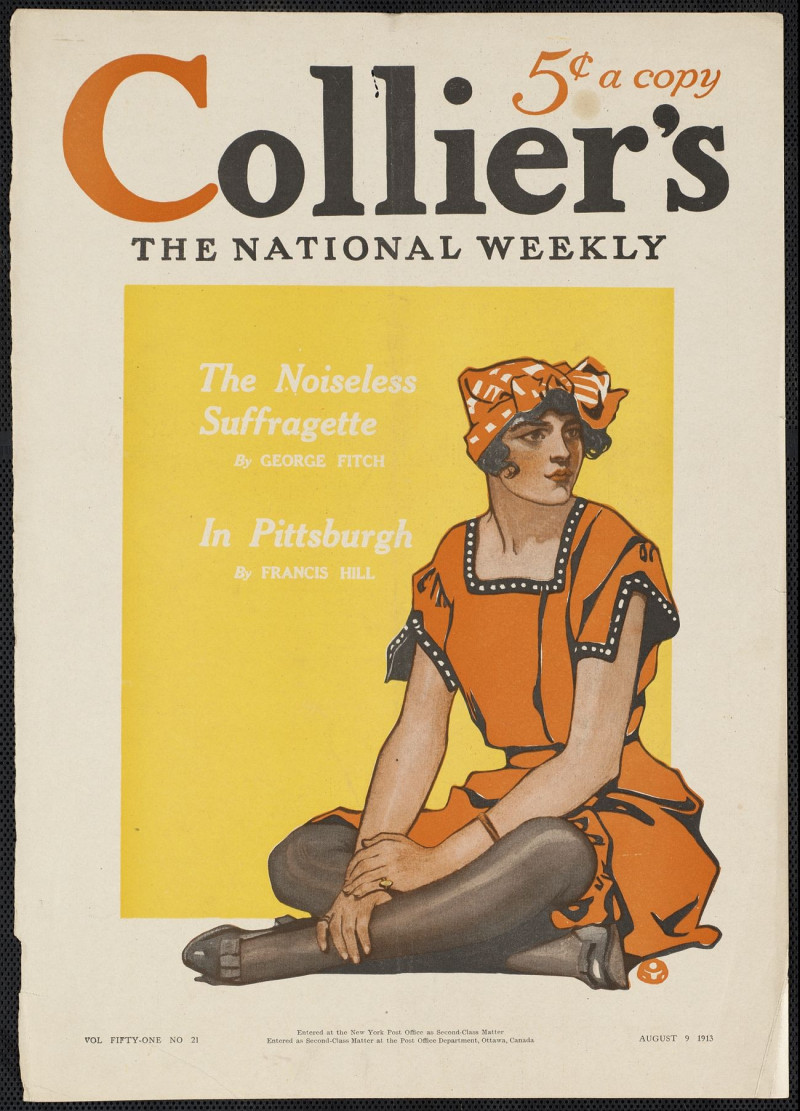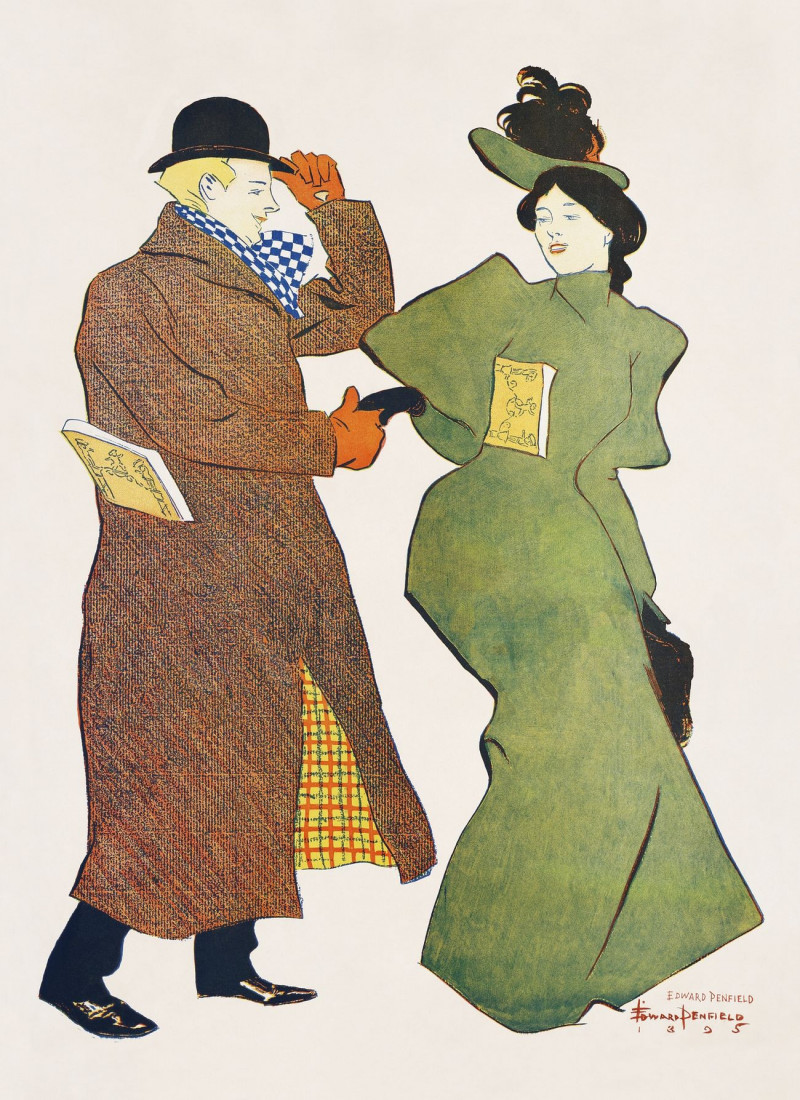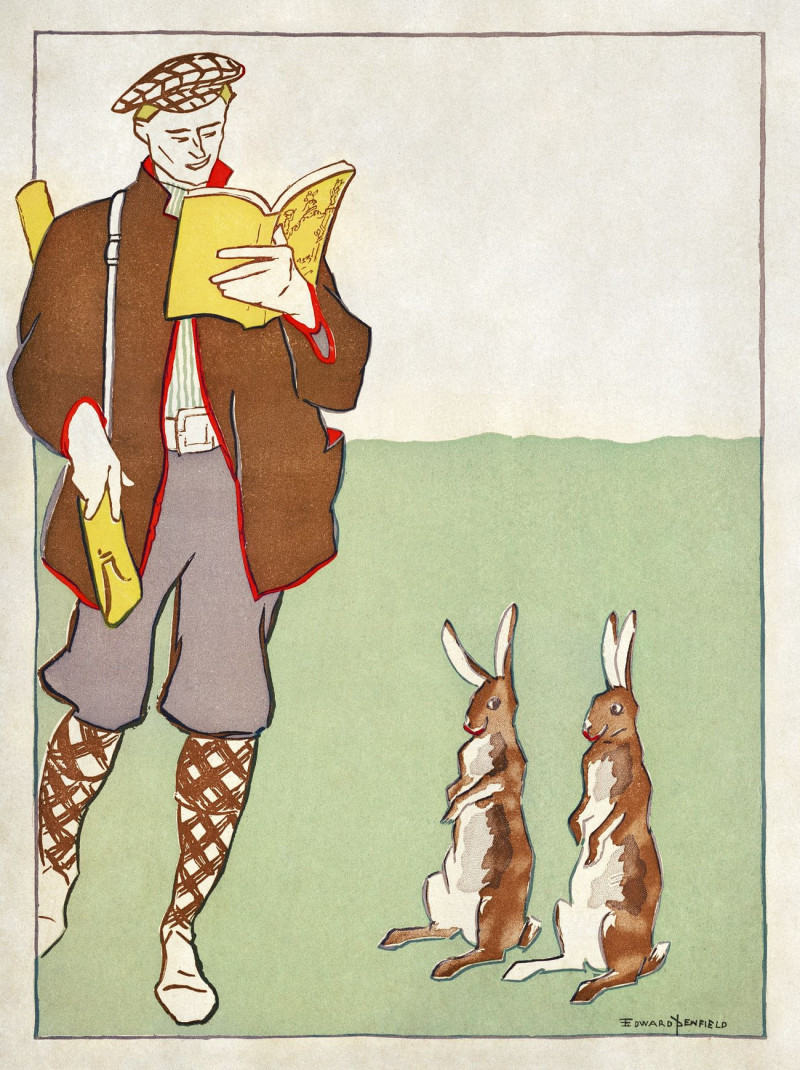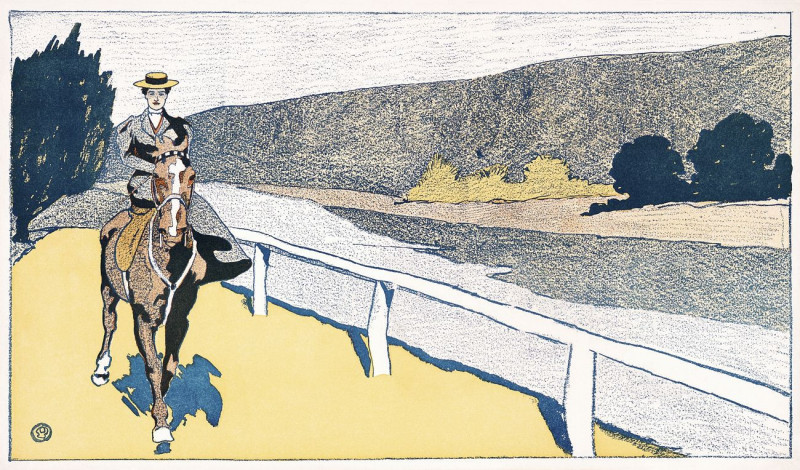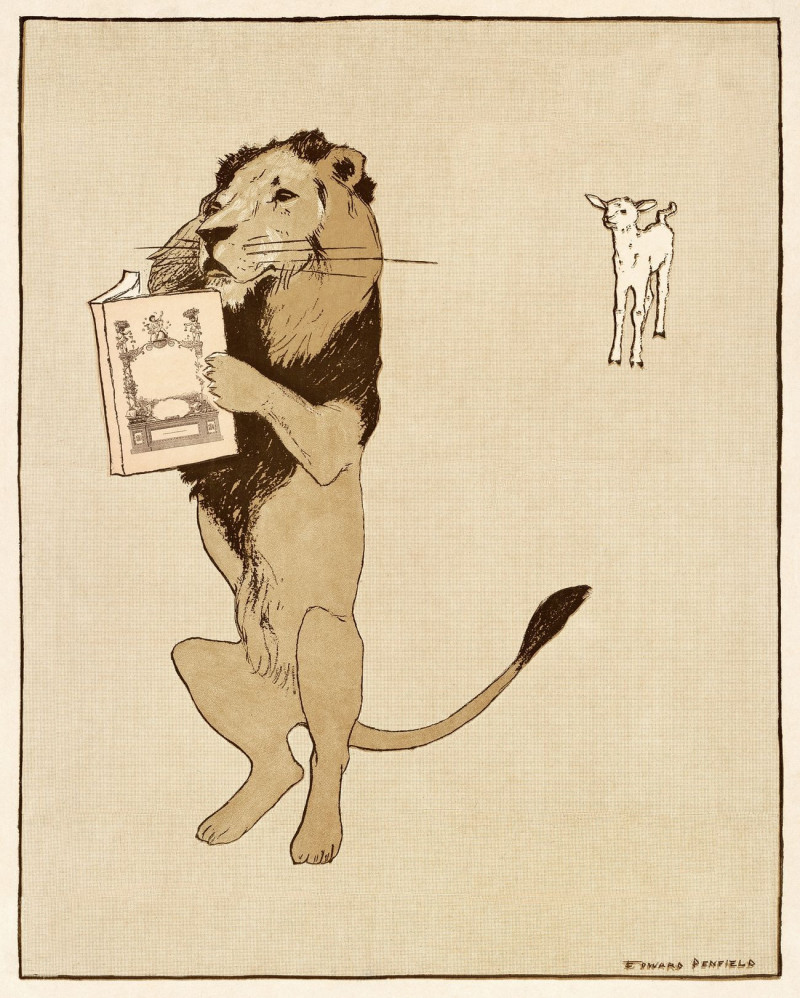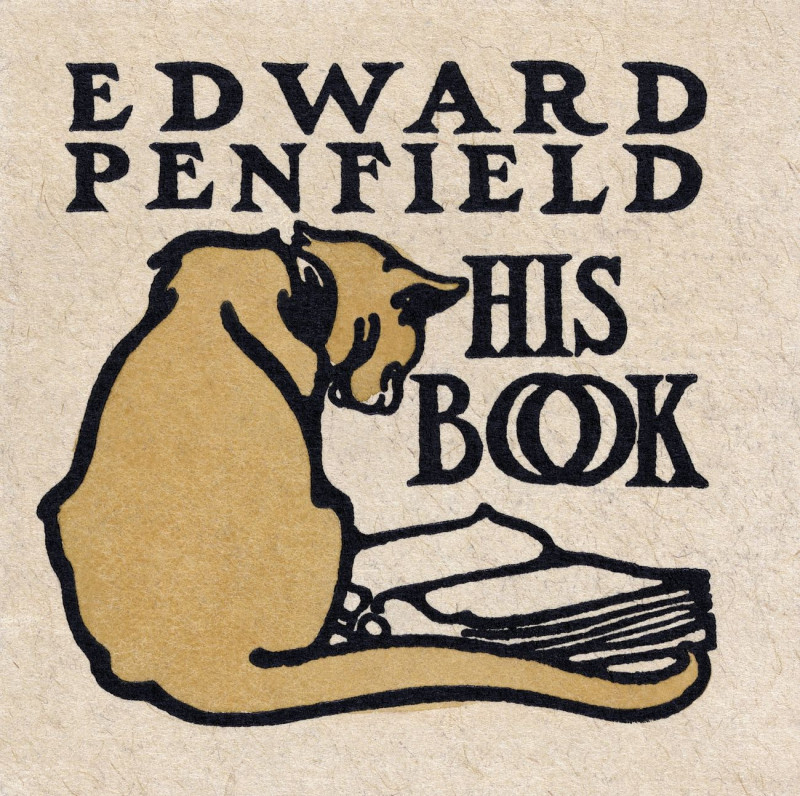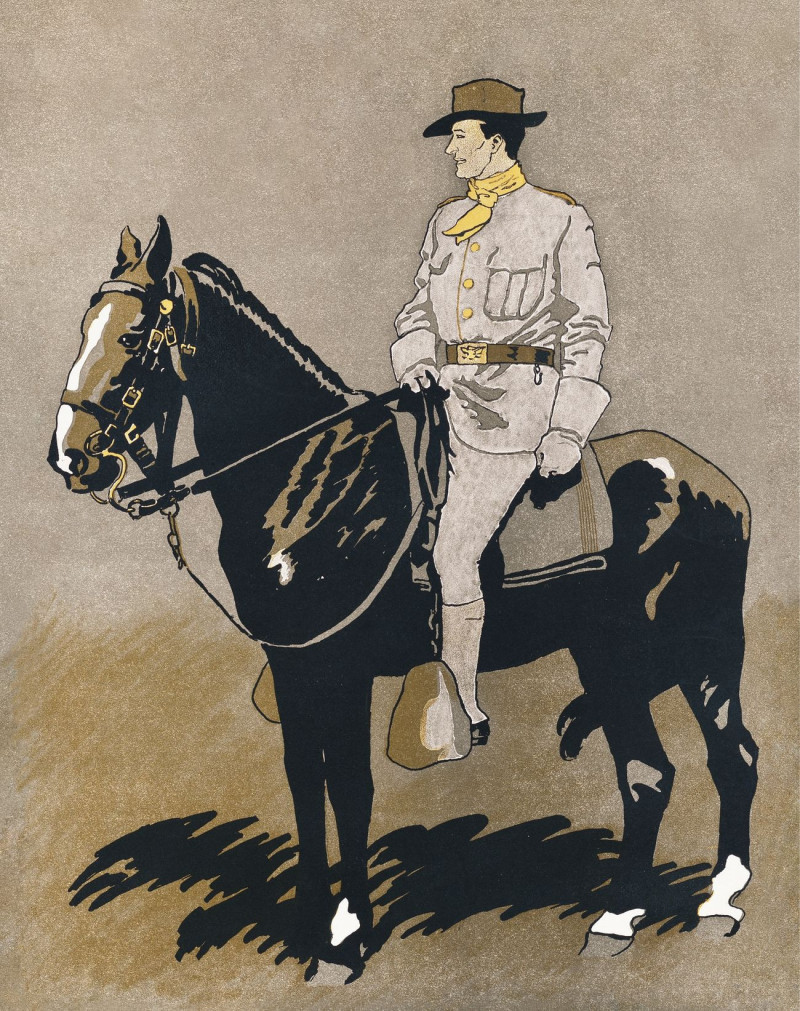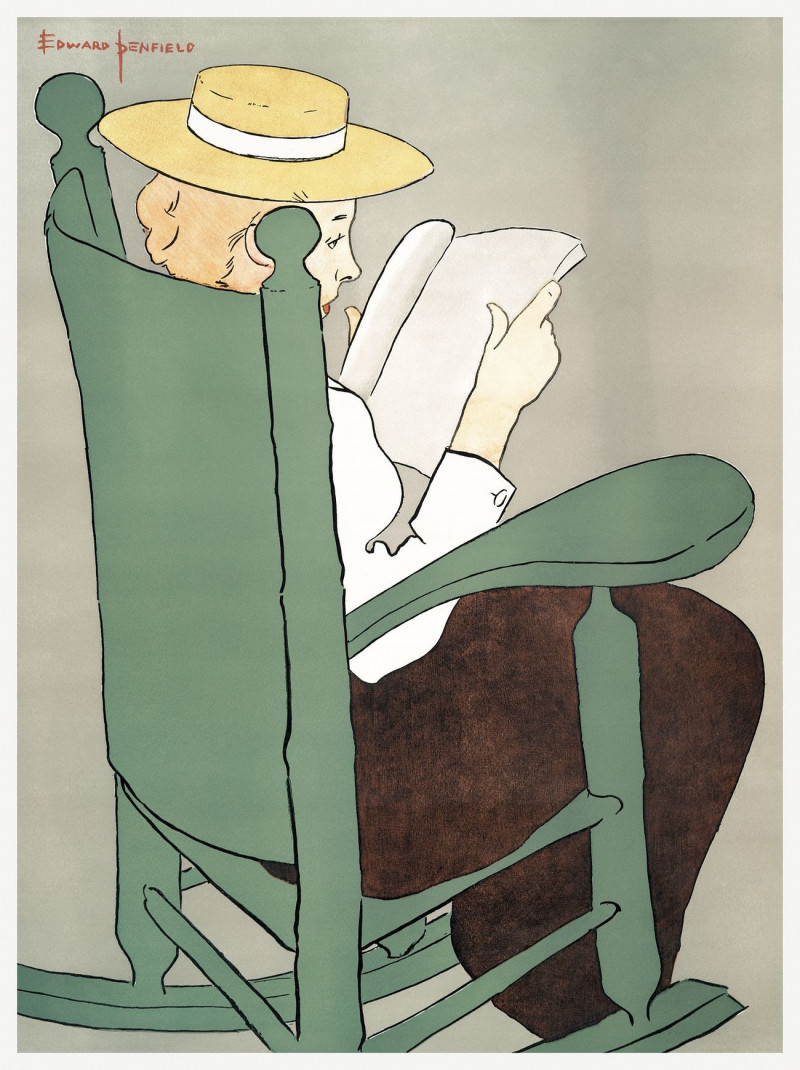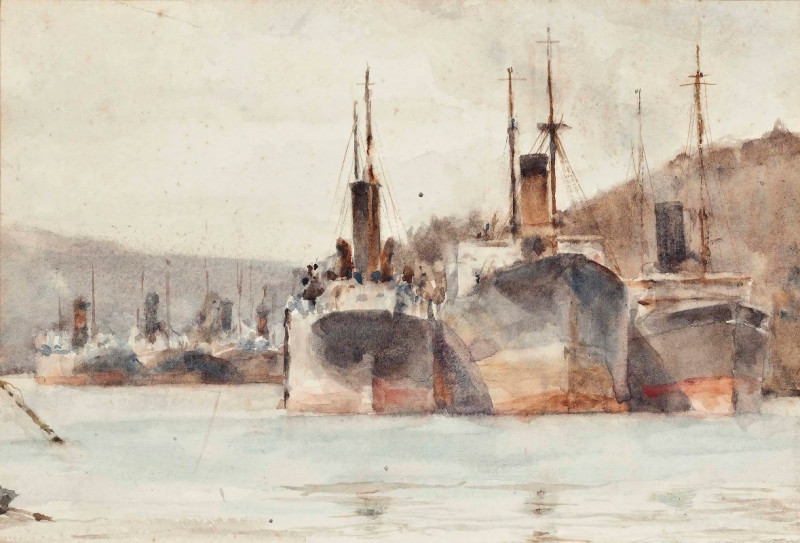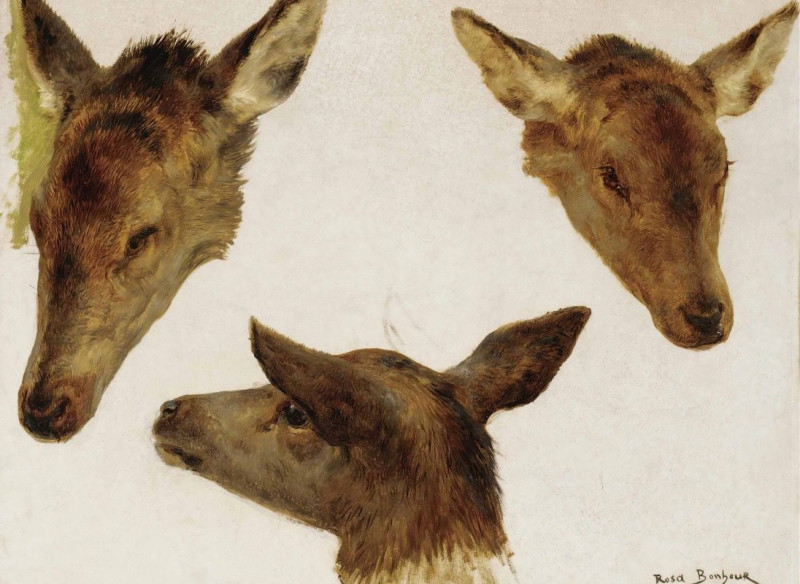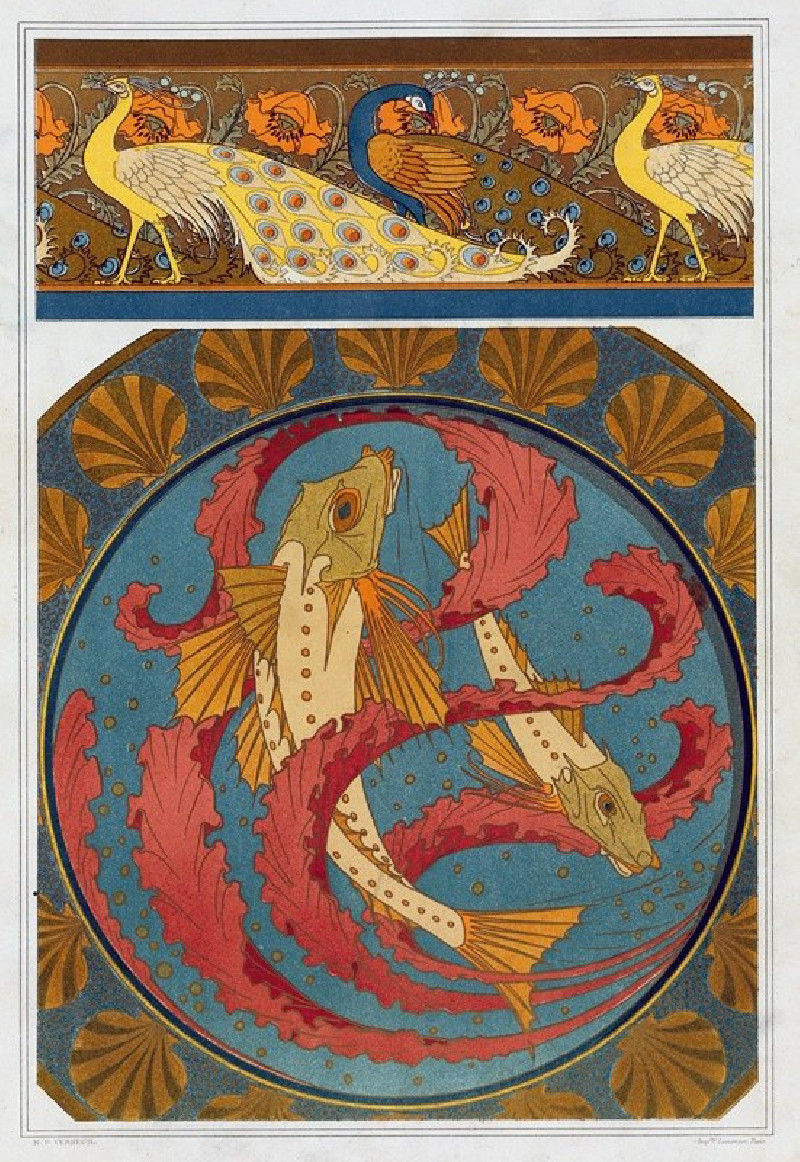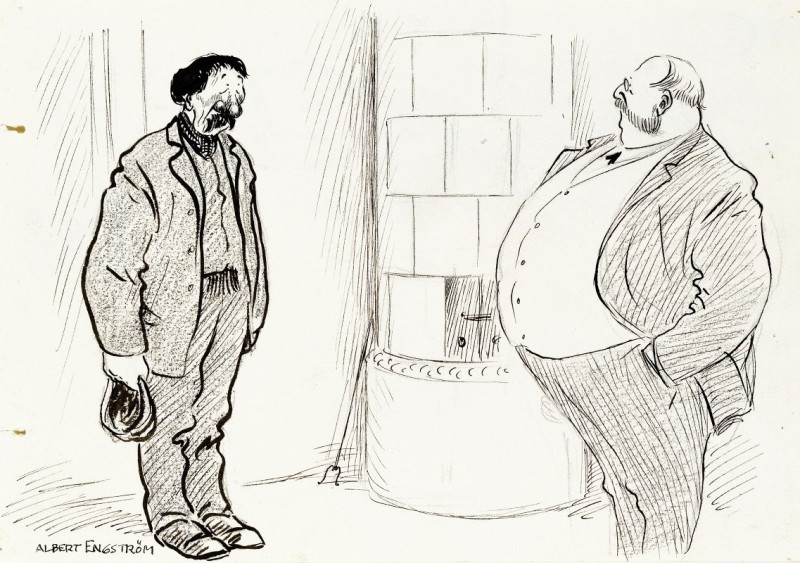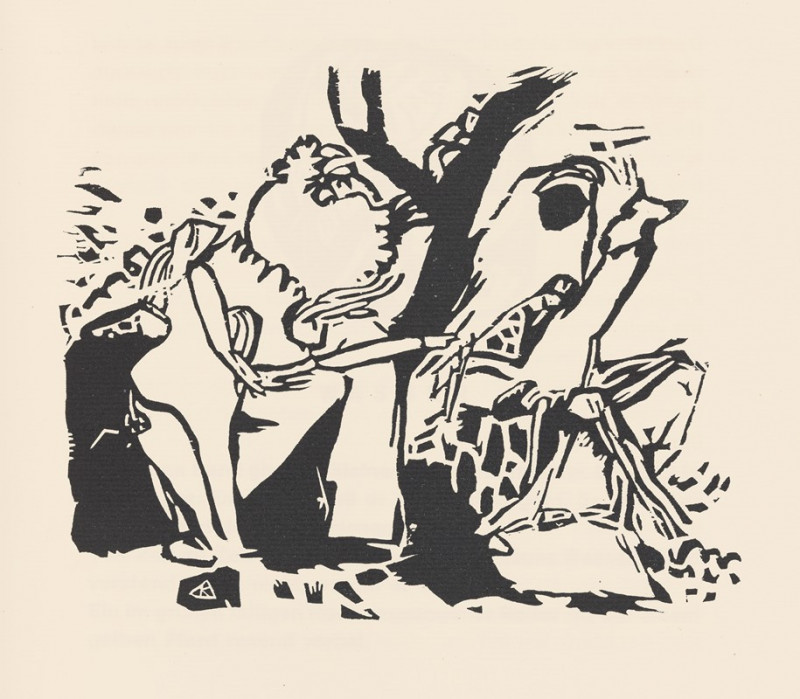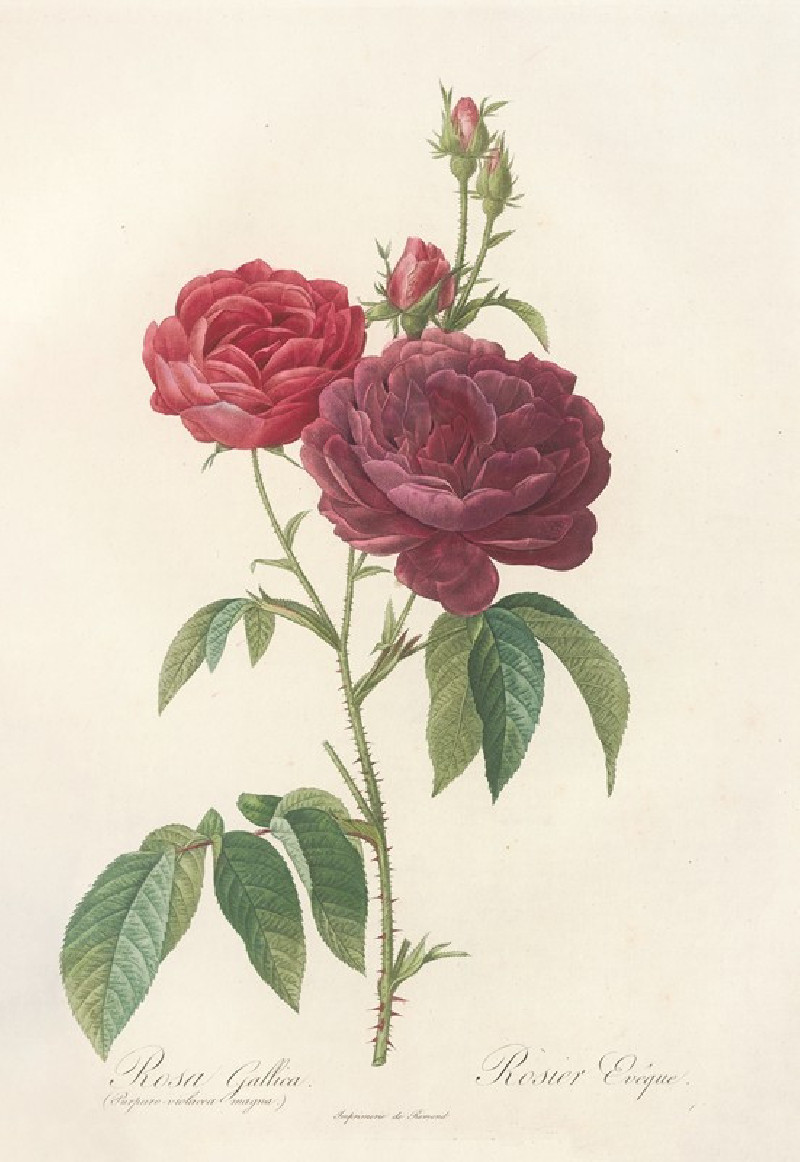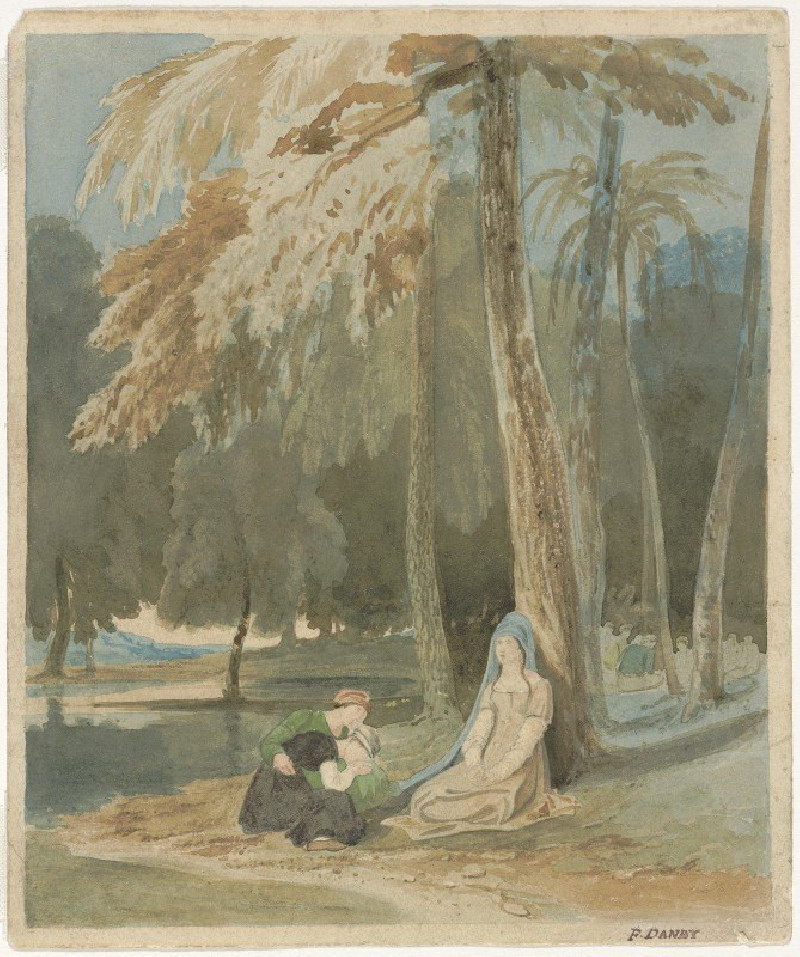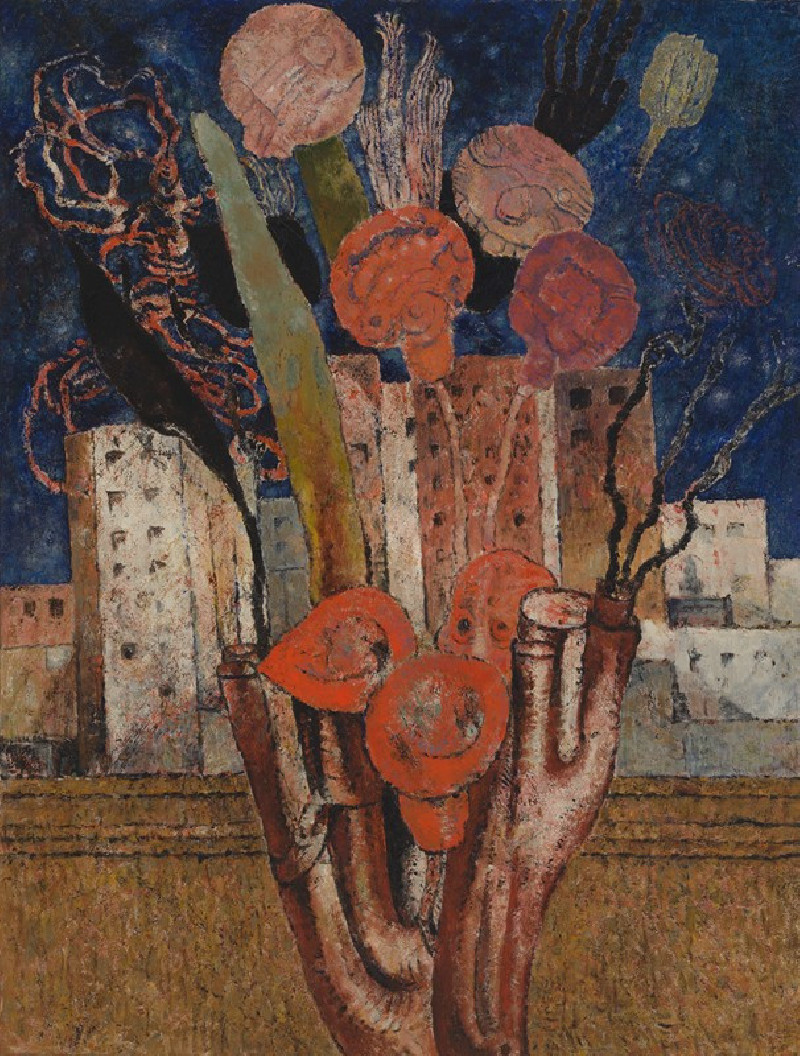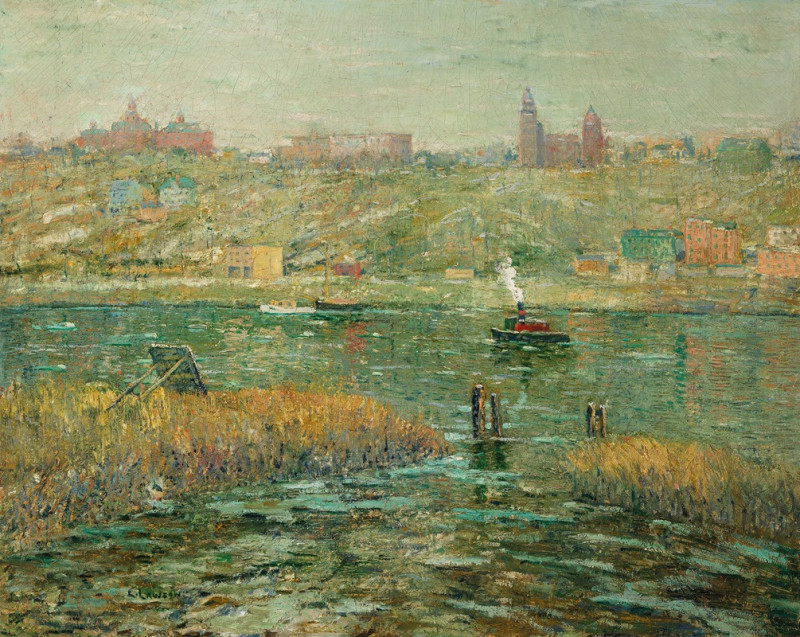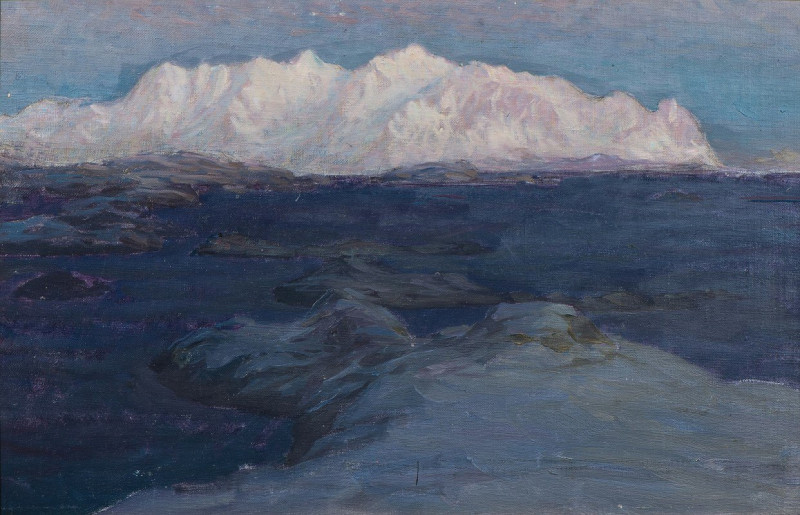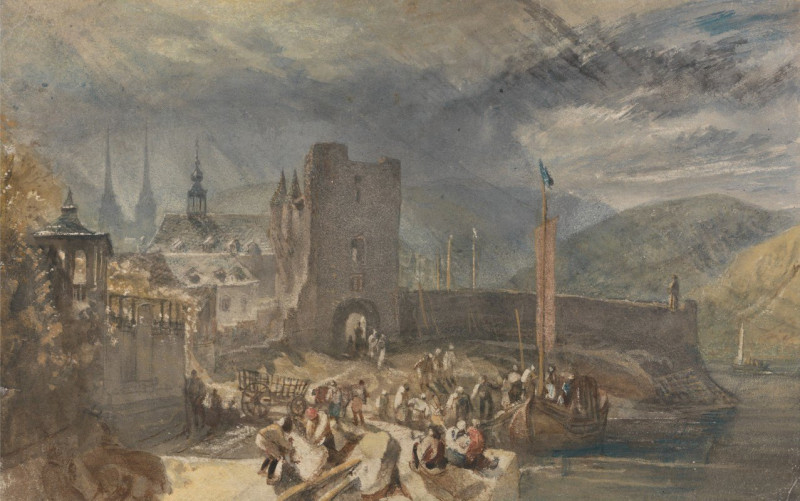Harper'S August
Technique: Giclée quality print
Recommended by our customers
More about this artwork
"Harper's August" is a captivating illustration created by Edward Penfield, renowned for his role in defining the Art Nouveau movement in the United States. This print was likely designed as a magazine cover for Harper’s Monthly Magazine, reflecting both advertising and artistic qualities of the era.The artwork features two central figures, distinctively drawn with bold outlines and minimalistic yet expressive facial features. On the left, there is a young man in a black sleeveless top and knee-length shorts, seated with his arms resting on his bent knees. His posture and solid, forthright gaze convey a sense of strength and stillness. On the right side, there is another figure, stylishly attired in a white shirt, black tie, and sporting a dark hat, who leans into their right hand, elbow propped on a knee, suggesting a pose of contemplation or ennui.The background is simple and unobtrusive, ensuring that the attention remains fixed on the figures and the text. Speaking of the text, it plays an integral role in the composition, prominently featuring the magazine’s name, "HARPER’S AUGUST," in large, bold red letters, along with a promotional teaser about a new story by Mark Twain titled "Tom Sawyer, Detective," starting in that issue.The use of color is restrained yet effective, with earthy tones and the contrasts between the reds, blacks, and whites aiding the visual impact of the design.
Delivery
Returns
Edward Penfield (1866-1925) was an influential American poster artist, considered as the father of the American poster movement. He was employed as an art editor for Harper’s Weekly, Monthly, and Harper’s Bazaar, where he made posters advertising each issue of the magazine for over seven years. His art was avant-garde with less concern for the dramatic curving lines of Art Nouveau, inspired by Japanese ukiyo-e block prints, figure drawings by Henri de Toulouse-Lautrec, color lithographies by Jules Chéret, and other contemporary artists. He created simplified scenes of daily life in saturated colors, including horses, cats, sports, and women’s fashion.

